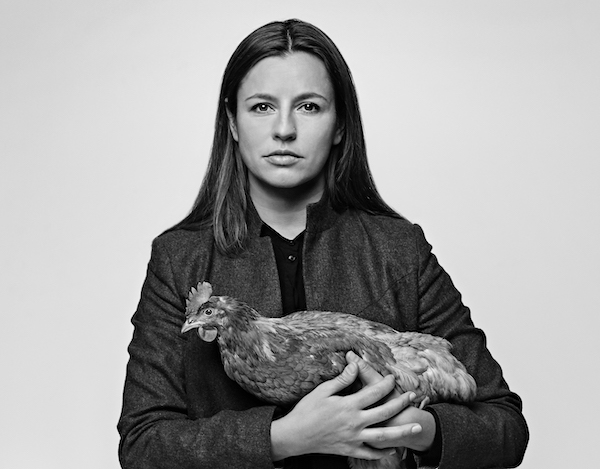Apr 2, 2024 12:59 PM
Saxophonist, Sonic Explorer Casey Benjamin Dies at 45
Casey Benjamin, the alto saxophonist, vocalist, keyboardist and producer who stamped his distinctive sounds on the…

Seeing a Charles Lloyd performance changed the trajectory of Maria Faust’s creative life.
(Photo: Kaupo Kikkas)Growing up in remote Kuressaare, a small island village in Communist Estonia, saxophonist and composer Maria Faust had no exposure to jazz.
“I heard mostly Soviet propaganda music, funeral marching bands, classical music, some folk music, choir music and, of course Estonian pop and rock,” she said. “There’s this famous propaganda poster that proclaims, ‘Today you play jazz, tomorrow you betray your country.’”
She knew she was a musician from a very young age, despite growing up in a family of nonmusicians. “Not that I would become a musician, but that I already was,” she said. “No one really knew what was up with the kiddo talking about composing and practicing and drawing piano keys on paper.”
When Faust was 8, her single mother put herself into debt purchasing a piano for the precocious composer. And when she was 14, Faust picked up the saxophone, but put it aside when it didn’t fit into her formal studies. She pursued classical music early on, but didn’t discover jazz until she heard a concert by Charles Lloyd in Tallinn, the nation’s capital, at the Jazzkaar Festival when she was 18.
“I was blown away.”
She returned to the saxophone.
Faust’s talent for writing, arranging and improvising within the jazz tradition have been made clear by the stunning recordings she’s made since settling in Copenhagen, Denmark—where she earned her Ph.D. at the prestigious Rhythmic Music Conservatory. But what’s more compelling and impressive is her refusal to hew to any single musical lineage.
Indeed, she’s an inveterate explorer fueled by deep intellectual curiosity.
“I make music for myself, so as my interests change, my music changes,” Faust, 40, said. “I want to try it all. I need music to dance to, scream to—and spiritual music. I’m a really emotional and instinctive person, so my choices in projects are not calculated well in advance. I find something, explore it, and run with it at full speed until there’s a natural end point.”
She’s also staunchly true to herself and as much as she chafed against the rigidity of education early on, she also accepts and takes a certain pride in it. On her website she has insisted, “I am a child of communism! I did not swing. I marched!”
She’s imaginatively and fruitfully pulled from her upbringing with a practice she calls “memory analysis,” drawing upon collective memory, forgiveness, historical research and more innate recollections, such as the sound of water, which she has called “a natural and unpredictable force of oppressed feelings like anger and sorrow.”
Last year’s ravishing Machina (Stunt), a drummerless chamber-jazz recording, featured field recordings of lapping water, passing boats and the creaking of an old ship hull. This spring, she dropped a viscerally grinding trio recording with the New York rhythm section of drummer Weasel Walter and bassist Tim Dahl called Farm Fresh (Gotta Let It Out), with a focus on her fiery alto playing. She also performs in an experimental electronic trio called Shitney—with Danish singer Qarin Wikström and guitarist Katrine Amsler.
While Faust pours her heart into such projects with total commitment, her greatest work has been with mid-sized bands that deploy her “memory analysis,” such as Jazz Catastrophe and Sacrum Facere, which released a gorgeous 2014 album inspired by Estonian folklore and runic singing. She later collaborated with the Danish pop singer Kira Skov for In The Beginning (Stunt), which “used repetition and prayer as compositional tools” to forge a stunning hybrid of Estonian folk and sacred music, jazz improvisation and sophisticated pop melodies, enhanced by a traditional choir. A new Sacrum Facere is due next year, featuring church organ, and Faust has also been commissioned to compose a Mass. For balance, a second Shitney album is also scheduled to drop. DB

Benjamin possessed a fluid, round sound on the alto saxophone, and he was often most recognizable by the layers of electronic effects that he put onto the instrument.
Apr 2, 2024 12:59 PM
Casey Benjamin, the alto saxophonist, vocalist, keyboardist and producer who stamped his distinctive sounds on the…

“He’s constructing intelligent musical sentences that connect seamlessly, which is the most important part of linear playing,” Charles McPherson said of alto saxophonist Sonny Red.
Feb 27, 2024 1:40 PM
“I might not have felt this way 30 to 40 years ago, but I’ve reached a point where I can hear value in what people…

Albert “Tootie” Heath (1935–2024) followed in the tradition of drummer Kenny Clarke, his idol.
Apr 5, 2024 10:28 AM
Albert “Tootie” Heath, a drummer of impeccable taste and time who was the youngest of three jazz-legend brothers…

“Both of us are quite grounded in the craft, the tradition and the harmonic sense,” Rosenwinkel said of his experience playing with Allen. “Yet I felt we shared something mystical as well.”
Mar 12, 2024 11:42 AM
“There are a few musicians you hear where, as somebody once said, the molecules in the room change. Geri was one of…

Henry Threadgill performs with Zooid at Big Ears in Knoxville, Tennessee.
Apr 9, 2024 11:30 AM
Big Ears, the annual four-day music celebration that first took place in 2009 in Knoxville, Tennessee, could well be…